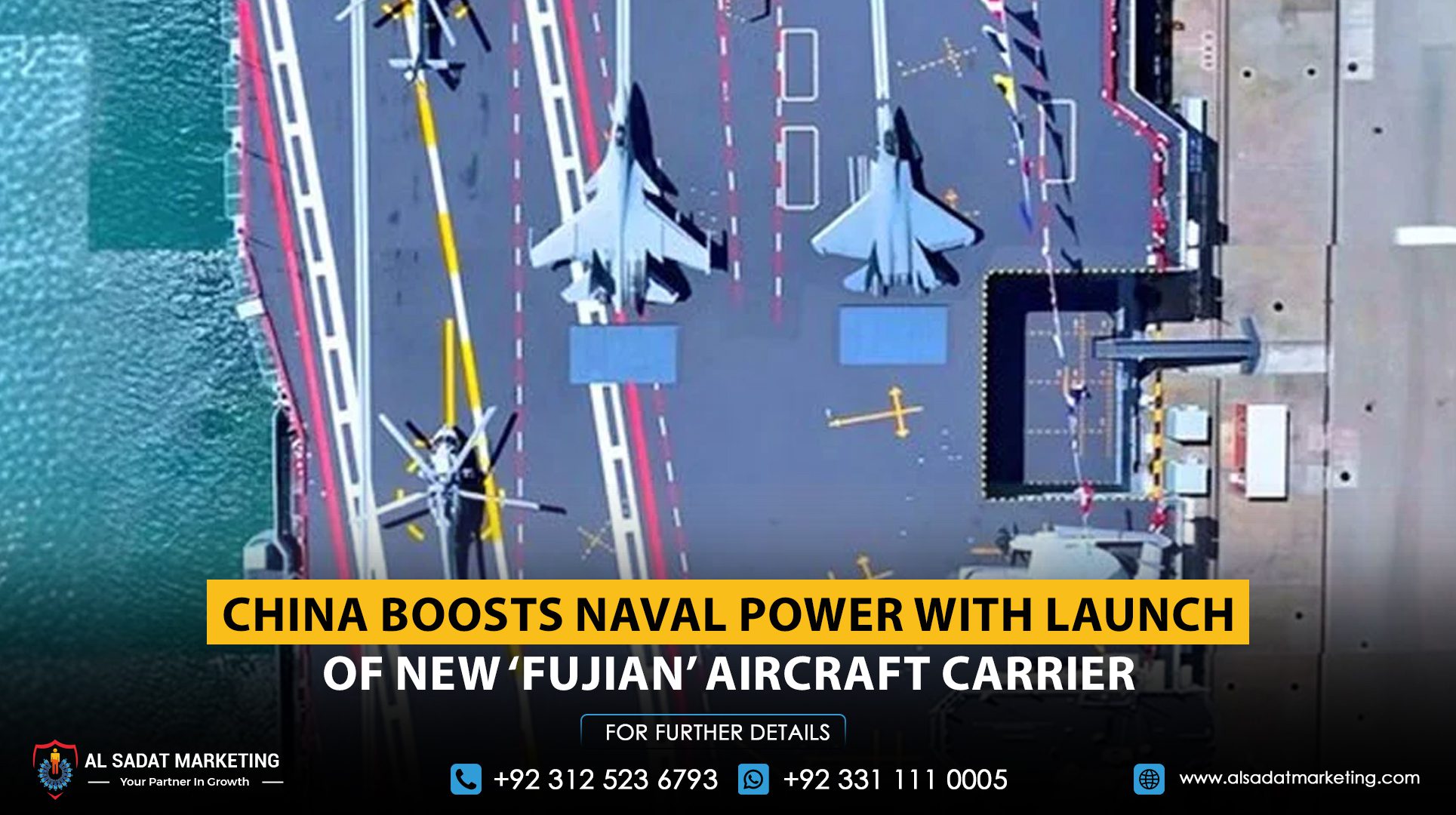China has officially put its third aircraft carrier, the Fujian, into active service, marking a major step in its expansion of naval power. The commissioning ceremony took place this week in Hainan province, where President Xi Jinping attended the event, presented the navy flag, and inspected the vessel. This move signals China’s growing ambition to operate a modern blue-water navy capable of projecting power far from its shores.
The Fujian is currently the largest and most advanced aircraft carrier in China’s fleet. Unlike the country’s earlier carriers, the Liaoning and the Shandong, which use a ski-jump ramp system, the Fujian is equipped with electromagnetic catapults. This technology allows it to launch heavier and more advanced aircraft, placing it closer in capability to the latest U.S. carriers.
During recent sea trials, the Fujian successfully launched several new aircraft, including the J-35 stealth fighter, the KJ-600 early-warning plane, and a catapult-ready version of the J-15 fighter jet. These tests show China’s focus on building a carrier group that can support long-range operations and improve its surveillance and strike abilities.
Despite the commissioning ceremony, experts say the Fujian will still need more time to reach full operational readiness. Analysts note that many of the ship’s aircraft systems and combat procedures are still in early testing stages. The vessel has already completed multiple sea trials over the past year, but more work and training will be required before it can carry out extended missions.
Strategically, Fujian strengthens China’s capacity in the Indo-Pacific region. While it is powered by conventional diesel engines, not nuclear power like U.S. carriers, it still has the range to operate far into the Pacific, though it will need to refuel on long missions. The U.S. Department of Defense has stated that China’s expanding carrier program will allow it to project power against rival navies and support operations beyond its coastal zone.
The carrier also carries symbolic value inside China. It is being highlighted in state media as a sign of technological progress, national pride, and military advancement. Analysts believe Fujian may soon appear in exercises near Taiwan and the Western Pacific, signaling a more assertive maritime posture. However, how effective it will be during real conflict scenarios remains to be seen, as China continues to train crews and integrate new aircraft into its fleet.
The Fujian represents a major milestone for China’s navy, but its actual impact will depend on how quickly its systems and personnel mature. For now, it stands as a strong message of China’s long-term intent to become one of the world’s leading naval powers.










